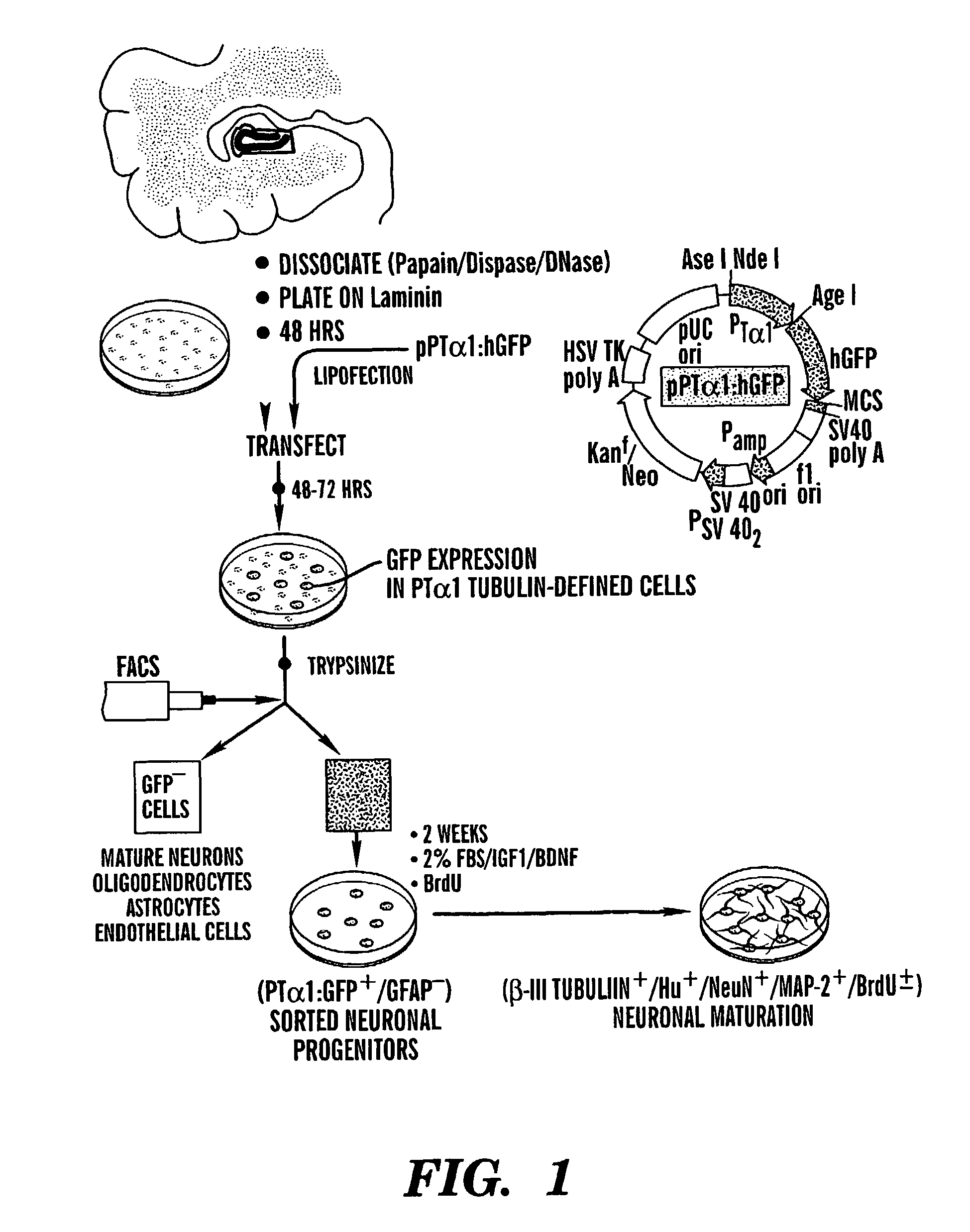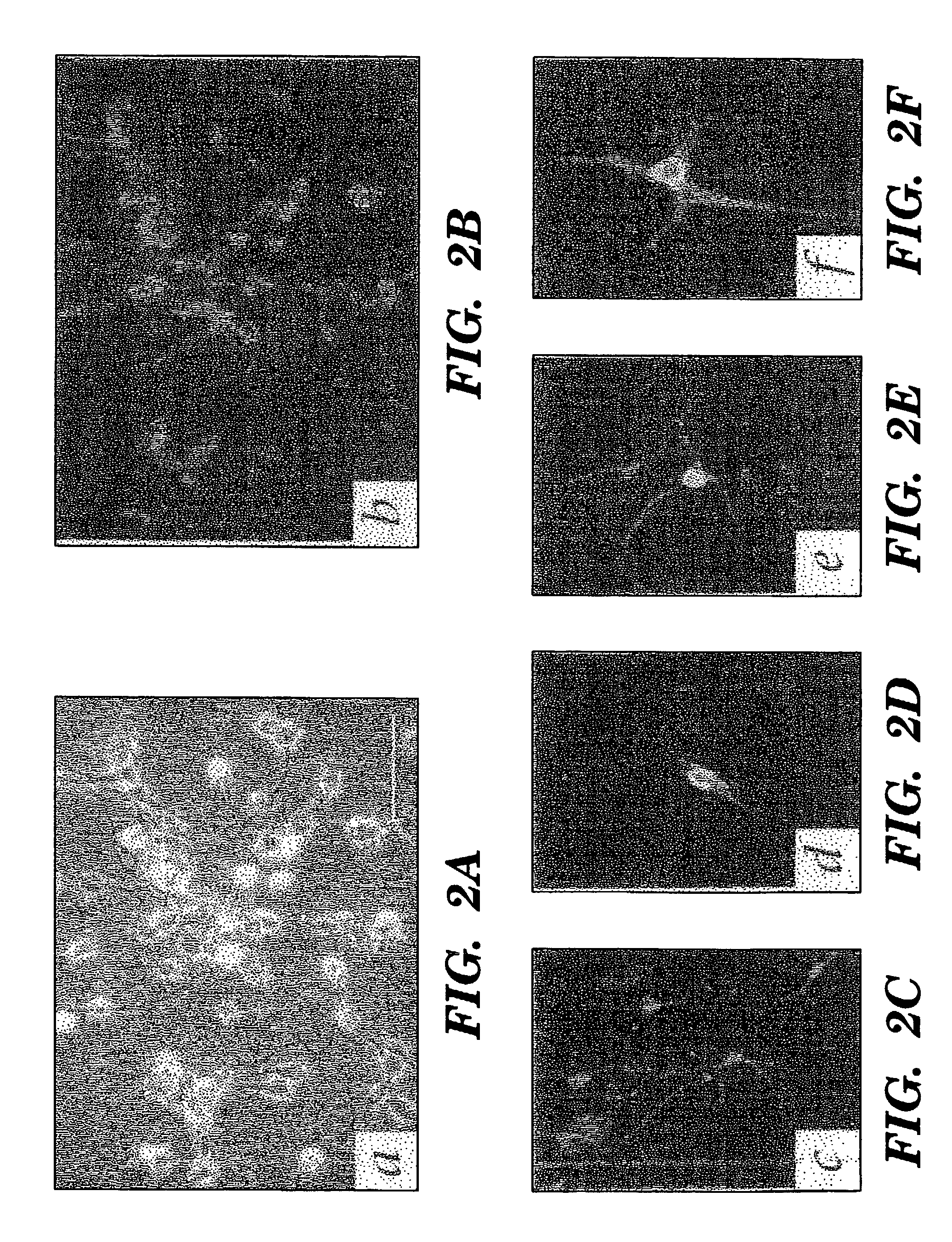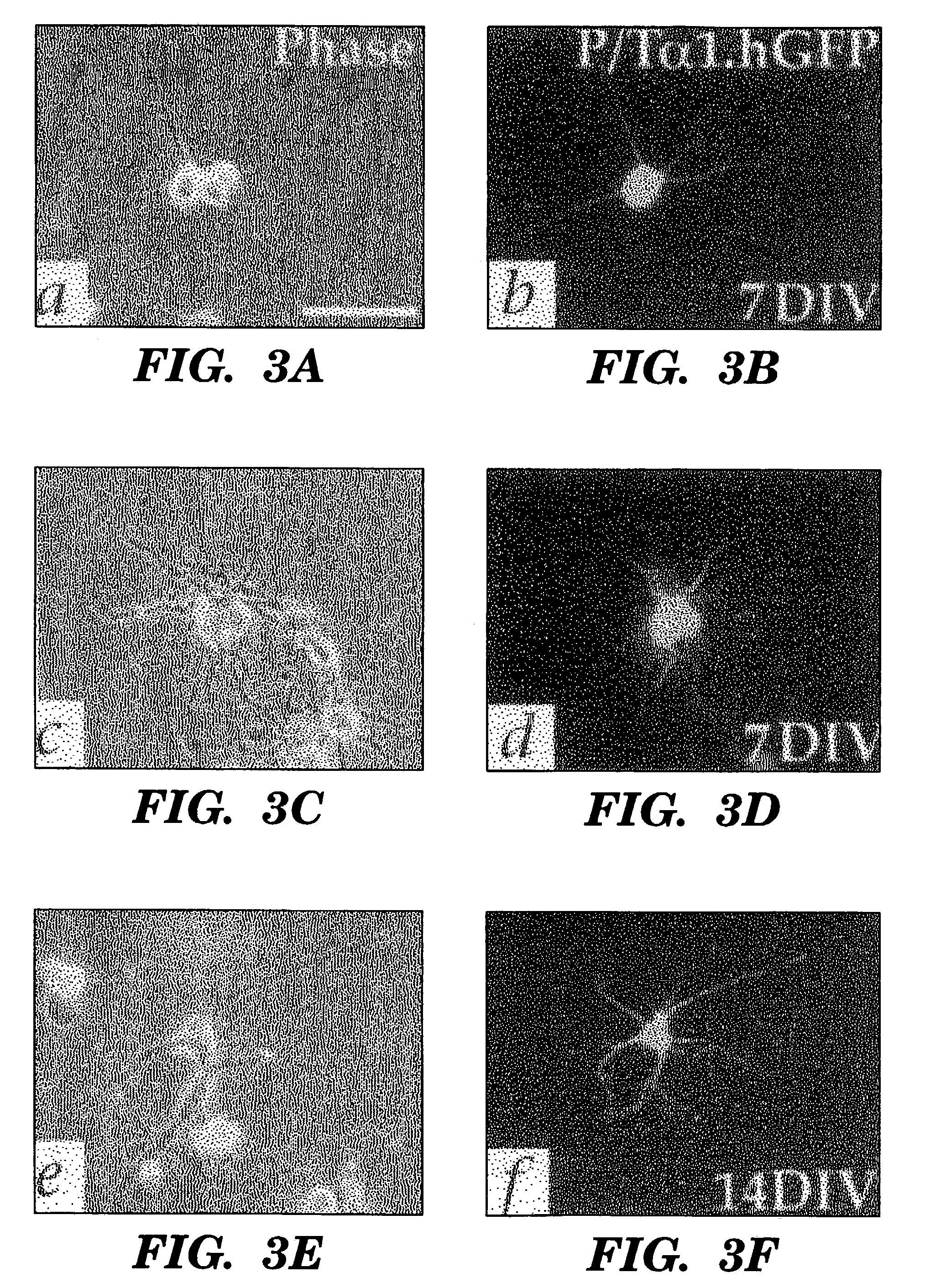Neuronal progenitor cells from hippocampal tissue and a method for isolating and purifying them
a technology of neural progenitor cells and hippocampal tissue, which is applied in the field of separating cells and hippocampal neural progenitor cells, can solve the problems of the failure of the mature brain to generate new neurons, the relative scarcity of adult brain tissue, and the inability of the damaged brain to function as structurally significant self-repair
- Summary
- Abstract
- Description
- Claims
- Application Information
AI Technical Summary
Benefits of technology
Problems solved by technology
Method used
Image
Examples
example 1
Materials and Methods
Adult Human Hippocampal Dissociation and Culture
[0056]Adult human brain tissue was obtained in the course of temporal lobectomy, as described (Pincus et al., 1998b; Kirschenbaum et al., 1994). The hippocampus was dissected free of the ventricular surface, and the dentate gyrus then dissected from the rest of the tissue. This sample was cut into pieces of roughly 2 mm on edge, rinsed twice with PIPES (120 mM NaCl, 5 mM KCl, 25 mM glucose, 20 mM PIPES), and dissociated in papain / DNase, as described (Roy et al., 1999; Doetsch et al., 1999). The dispersed cells were collected and rinsed with DMEM / F12 / N2 containing 20% platelet-depleted FBS (PD-FBS, Cocalico, Reamstown, Pa.) to stop the enzymatic dissociation, and resuspended at 1×107 cells / ml in DMEM / F12 / N2 with 2% PD-FBS and 10 ng / ml FGF-2 (Sigma, St. Louis, Mich.). The cells were plated at 0.1 ml / dish into 35 mm Falcon Primaria plates coated with laminin (2 μg / cm2), at 37° C. in 5% CO2. Four hours later, an additi...
example 2
[0064]Neurons can be Harvested in High-Yield from the Adult Human Dentate Gyrus
[0065]To characterize mitotic cell types harvestable from the adult human hippocampus, papain dissociates of surgically-resected hippocampus were obtained from eight patients. All were males, ranging from 5 to 63 years old. Four patients had temporal lobe resections for medication-refractory epilepsy (Pincus et al., 1998b); two were subjected to decompressive resection during or after extra-axial meningioma removal, one sample was taken during aneurysm repair, and one during decompression for traumatic edema. In each, the dentate gyrus was dissected free of the temporal ventricular zone, and the two removed separately. The dentate was dissociated using papain / Dnase (Palmer et al., 1997); the resultant cultures were raised in DMEM / F12 / N2, with 20 ng / ml FGF2 and 2% platelet-depleted fetal bovine sera (PD-FBS). A mitotic marker, bromodeoxyuridine (BrdU; 10 μg / ml) was added at 6 hours in vitro. Cultures were ...
example 3
Persistent Neurogenesis by Mitotic Progenitors in Adult Hippocampal Cultures
[0067]A substantial proportion of the antigenically-confirmed neurons incorporated BrdU from the culture media, indicating their genesis in vitro (FIGS. 2A-F). BrdU+ / βIII-tubulin+ neurons constituted 25.4±5.9% of all βIII-tubulin-defined neurons at 7 DIV. At this same time, BrdU+ / MAP-2+ cells were rare, consistent with the relatively late appearance of MAP-2 after neuronal mitogenesis. But by 14 DIV, 3.0±1.0% of all cells in these cultures expressed MAP-2, and of these, 22.5±7.3% were BrdU+.
[0068]The persistence of neurogenesis in these dissociates was also manifested by the sustained neuronal incorporation of BrdU in cultures to which the marker was first added after five days in culture. Among plates first exposed to BrdU on day 5 in vitro and fixed on day 7, 8.2±1.9% of the cells expressed TuJ1; this was roughly identical to the 8.9±2.8% incidence of TuJ1+ neurons in the plates exposed to BrdU from the ou...
PUM
| Property | Measurement | Unit |
|---|---|---|
| time | aaaaa | aaaaa |
| diameter | aaaaa | aaaaa |
| diameter | aaaaa | aaaaa |
Abstract
Description
Claims
Application Information
 Login to View More
Login to View More - R&D
- Intellectual Property
- Life Sciences
- Materials
- Tech Scout
- Unparalleled Data Quality
- Higher Quality Content
- 60% Fewer Hallucinations
Browse by: Latest US Patents, China's latest patents, Technical Efficacy Thesaurus, Application Domain, Technology Topic, Popular Technical Reports.
© 2025 PatSnap. All rights reserved.Legal|Privacy policy|Modern Slavery Act Transparency Statement|Sitemap|About US| Contact US: help@patsnap.com



